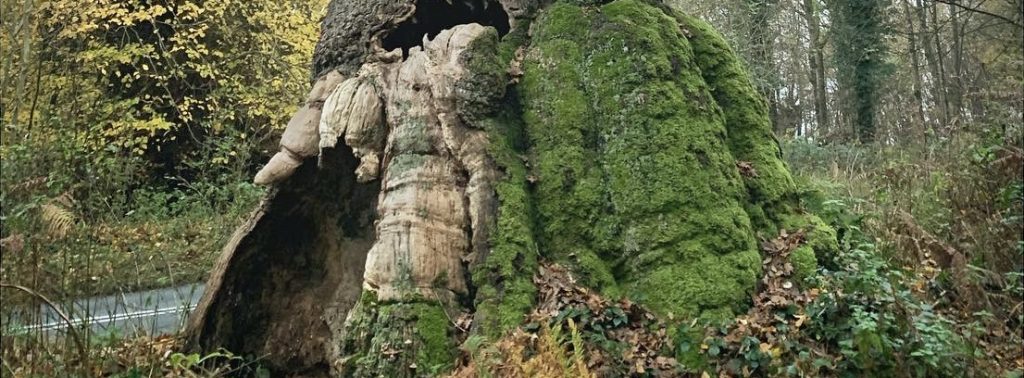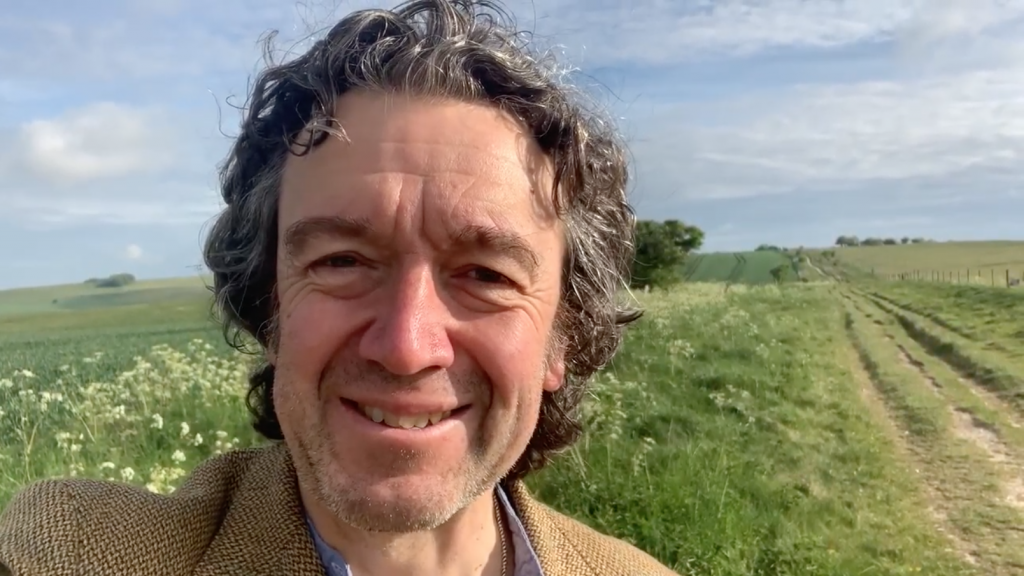
Feeding the roots
Church buildings and local ecology
With some churches in the UK seeing a trajectory of decline, Andrew Rumsey reflects on the enduring relationship between parish churches and the meaning of place and belonging. Like ancient trees, they can oxygenate the life around them, but only if their roots are nourished. More than mere buildings, these churches have a mystical role within a unique local ecology of soul, soil, and society.
From my home in Marlborough, North Wiltshire, almost every day I drive through the ancient Savernake Forest en route to Salisbury. Right beside the A346, halfway through this mystic woodland, is reputedly the country’s oldest oak tree (there are several contenders…) known as the Big Belly Oak, by virtue of its remarkable portly appearance. Certainly, it hasn’t taken much exercise, having stayed resolutely put on the same few feet of earth for the past eleven hundred years. The Big Belly looms up like a mammoth bollard by the roadside, an outsized traffic cone. Host to innumerable insects, mosses, and fungi, it is an ecological world entire of itself and shares its blessings liberally.
For the past two years I have simply torn past between sips of garage coffee. Just recently, though, I’ve found myself stopping off to pay regular pastoral visits, as though the tree were an elderly parishioner I ought to keep an eye on. Picking over stiff cadavers of deer that litter the verge, I approach, pat its hide and (because like many ancient oaks and yews it hollows in old age) often crouch inside for a moment, an eccentric, purple-shirted hermit.
The Big Belly Oak makes a good wayside chapel and is about the same age as both the English parish system and many of our historic church buildings. I think that’s why I have become so interested in its welfare, lately: this behemoth has become for me for me a symbol of local resilience, drawing its nourishment from the ground in which it was planted. Deeply cracked, bolstered up, vulnerable, but still (despite being shaken daily by juggernauts who slam and shudder over its roots, mere inches away) defiantly green.
For most of their thousand-year history, parish ministry was, like a tree, sustained solely by its local ecology: aristocratic patronage, tithes, glebe fields and myriad acts of charity that shored up both priest and building. In the nineteenth-century, the sudden spreading growth of industrial and urban centres, combined with the easing of Anglicanism’s exclusive grip on people’s religious allegiance, began to change this settled picture. Growing tolerance towards the ‘non-conformism’ that provided the ethical engine-room to building England’s new Jerusalems, matched with the dismantling of the whole workhouse-based system of parish relief and – towards the end of Victorian era – the reformation of local government, inevitably dislocated the old Anglican settlement and led to the post-war changes that brought a fairer (albeit more centralised) ‘levelling up’ of stipends and local provision. By the time my father was ordained priest in 1961, there weren’t really ‘good livings’ any more than there were especially bad ones.
Another signal shift that took place over this century or so of reform was the construction of church halls and parish rooms, which provided a home for communal activities that hitherto would have taken place in church, guild hall or barn. That the church building became more solely sacred and congregational space was in tune with the new separation of parish governance, so that the Vestry no longer looked after its welter of secular duties – the appointment of constables, the upkeep of roads and local drainage, all of which had shaped a peculiarly grounded ecclesiology.
Anglican church buildings, however, continued being locally funded – and largely remain so, unless they close. As the excellent new report by the National Churches Trust The Future of the UK’s Church Buildings points out, we are at a critical point in the sustaining of this remarkable estate. While alternative sources and models of financing their upkeep are undoubtedly needed (including, one trusts, increased support from national Government) the last thing we must do is uproot ancient churches from the soil of local support and affection. Those who love them most are those whose air they imperceptibly oxygenate with beauty, memory, and myth.
Church buildings have a unique atmosphere, and the discovery that our local one is not simply a home for confessing believers, but an inspiring setting for all manner of groups and gatherings, can be a revelation. Public meetings, pop-up cafes, heritage office space, gigs, and recitals – all could be possible, as well as the much-needed sanctuary and silence they offer our spirit. Church buildings belong within an ecology of soul, soil, and society: therefore, to stand firm, their roots must be fed.
I read this week that the root systems of ancient trees of the same species will often connect as neighbours – so that, grafted together, they may become healthier, more resilient. Like each parish church, the enduring spectacle of the Big Belly Oak is something of miracle and I look forward to the coming spring – when, by God’s grace, both will bud again.
“…They are like trees
planted by streams of water,
which yield their fruit in its season,
and their leaves do not wither.
In all that they do, they prosper.”Psalm 1v3

Andrew Rumsey is Bishop of Ramsbury in the Diocese of Salisbury, and is also a writer and musician.
Andrew’s new book English Grounds: A Pastoral Journal is published by SCM Press on 30 November 2021 and is available for pre-order at £15.99 here. His other books include Strangely Warmed (Bloomsbury, 2010) and Parish: An Anglican Theology of Place (SCM Press 2017). Andrew is also part of T4CG’s Friday Group, which published a series of public letters to the churches during 2020-2021.
Follow him on Twitter at @RevAndrewRumsey


